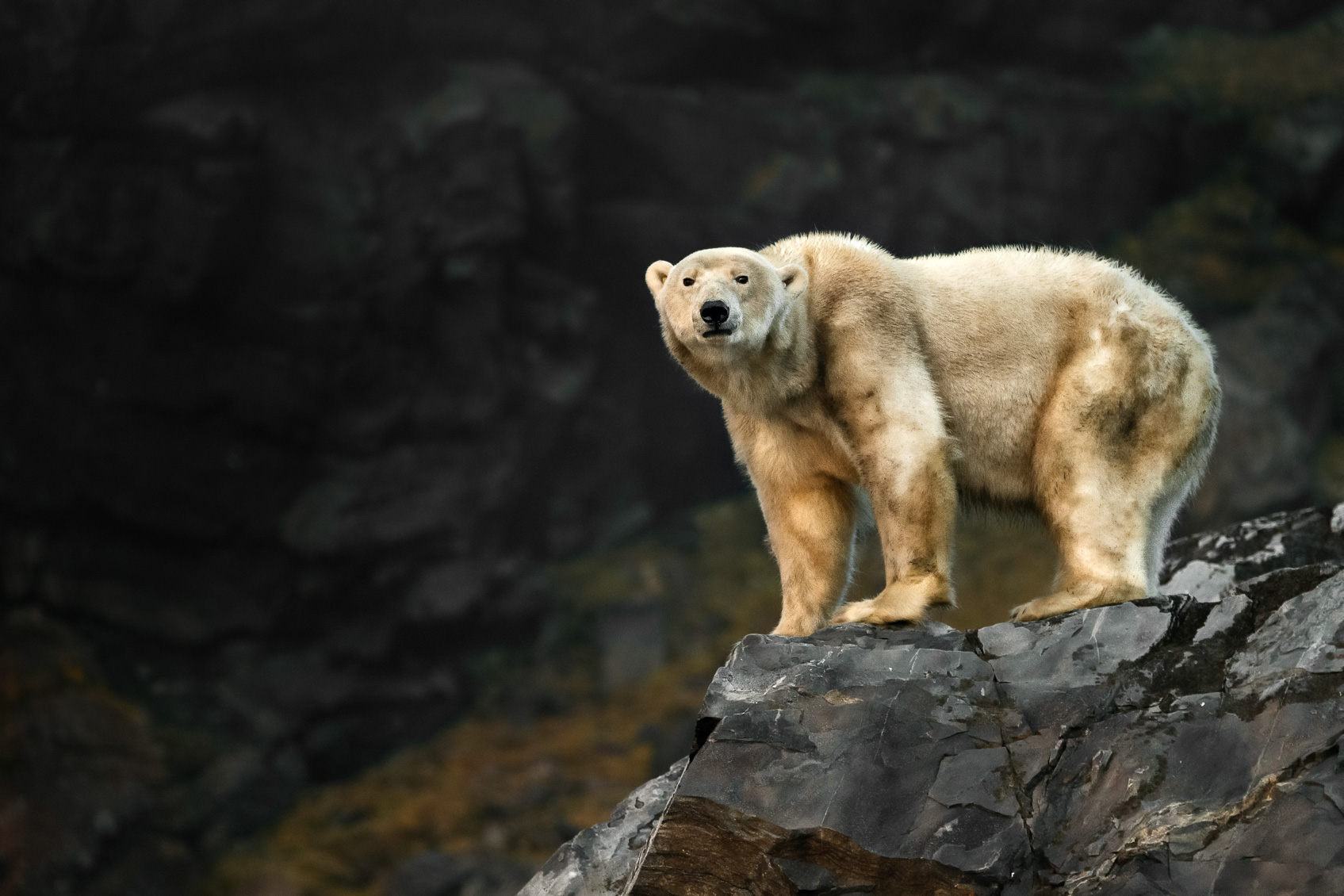A massive Polar bear on the large rock looks directly into the camera. That apex predator is quite dirty since there is no snow to roll in. This Polar bear climbs through the cliffs. Another Polar bear followed, which was just as messy. Usually, we see these animals with a shiny white coat of fur. As shown above, this is not always the case in reality.
Some walruses and a few Polar bears took over this island on Svalbard. Now it is their home for a while. Of course, the Polar bear on this large rock was on the food search. A walrus herd was just beneath, which some other bears had a look at them as well. A walrus would be an excellent meal for a Polar bear. They need at least 2 kilograms of fat per day to survive. Walrus fat would be just right for a delicious meal. Sometimes Polar bears capture young walruses to feed on.
When hungry, that bear eats any animal, including us. From reindeers to human garbage, from vegetation to birds. Remember, as shown above, they can climb pretty well like other bears! They also scavenge on carcasses of whales or walruses.
5 Facts About Polar Bears
- The apex predator often washes in water or snow. The Polar bear on the large rock had no snow, but it had water!
- They can climb up large rocks, even cliffs.
- In wintertime, they hibernate.
- That predator uses sea ice as a platform to hunt.
- Half their life they spend hunting.
Polar bears, Ursus maritimus, are listed under threatened wildlife on the IUCN website. Please explore as well as our beautiful Arctic landscape photographs.
You can purchase stock photos licenses or wall art photo prints in my portfolios. Do you need extra large photo prints or a custom size? Please, get in touch with me. I use high-quality print materials, such as acrylic, modern metal, canvas, and fine art paper.
This photograph is available to be purchased as a print. We offer our prints as unmounted fine art prints and framed prints that are ready-to-hang on your wall out of the box. Another option is that it can be licensed for personal or commercial use. Just click the add_shopping_cart icon left-hand side above the photo to select your choice.
For more information about the various types of prints we offer to purchase, please visit our Purchasing a print FAQ page.
Our Photo Licensing FAQ page explains the license types and helps you to choose the right license for your needs.
Before making a purchase, please read our Terms & Conditions page.

Marie Dubois –
Super photo of this fascinating animal! When is your next photo tour to photograph polar bears?
Anette Mossbacher –
Hi Marie, thanks so much for your comment. 😀 Good question when my wildlife photo tour is for polar bears. When one is in planing, I will send it to you. Have a great weekend.
Ciao Anette